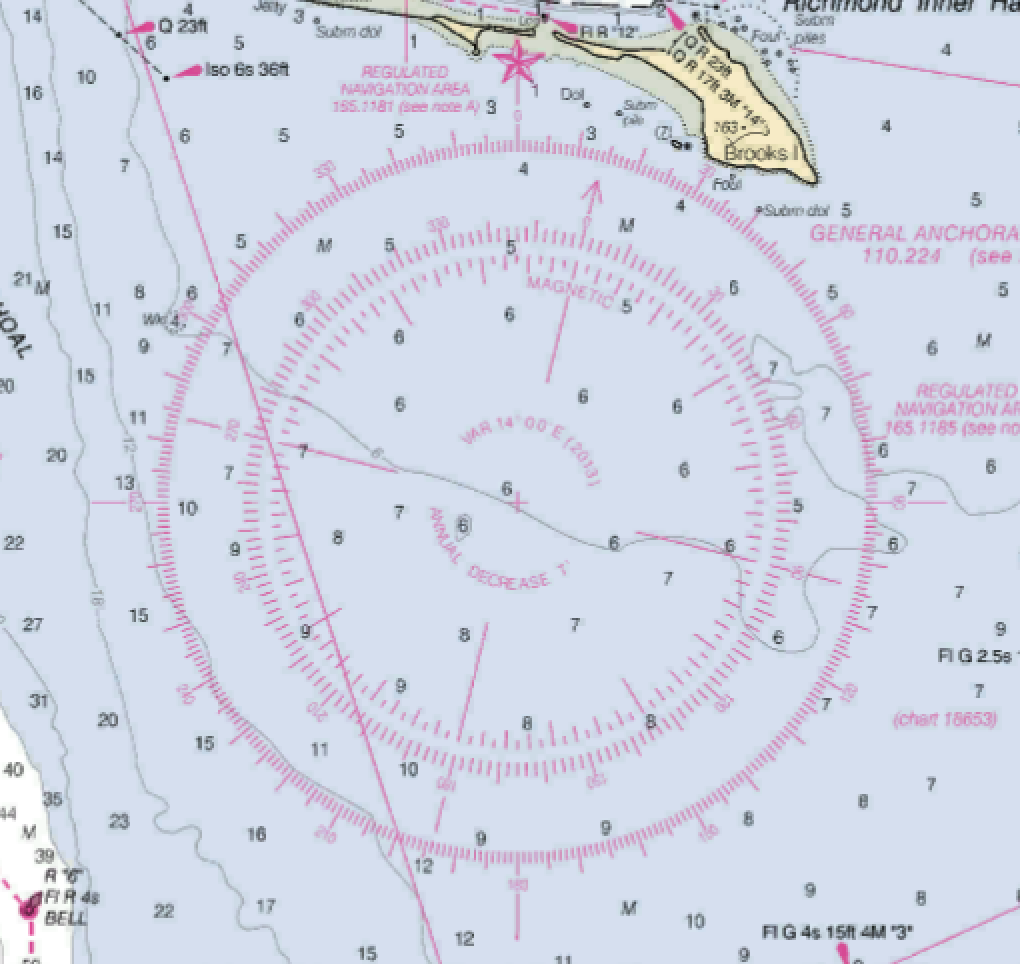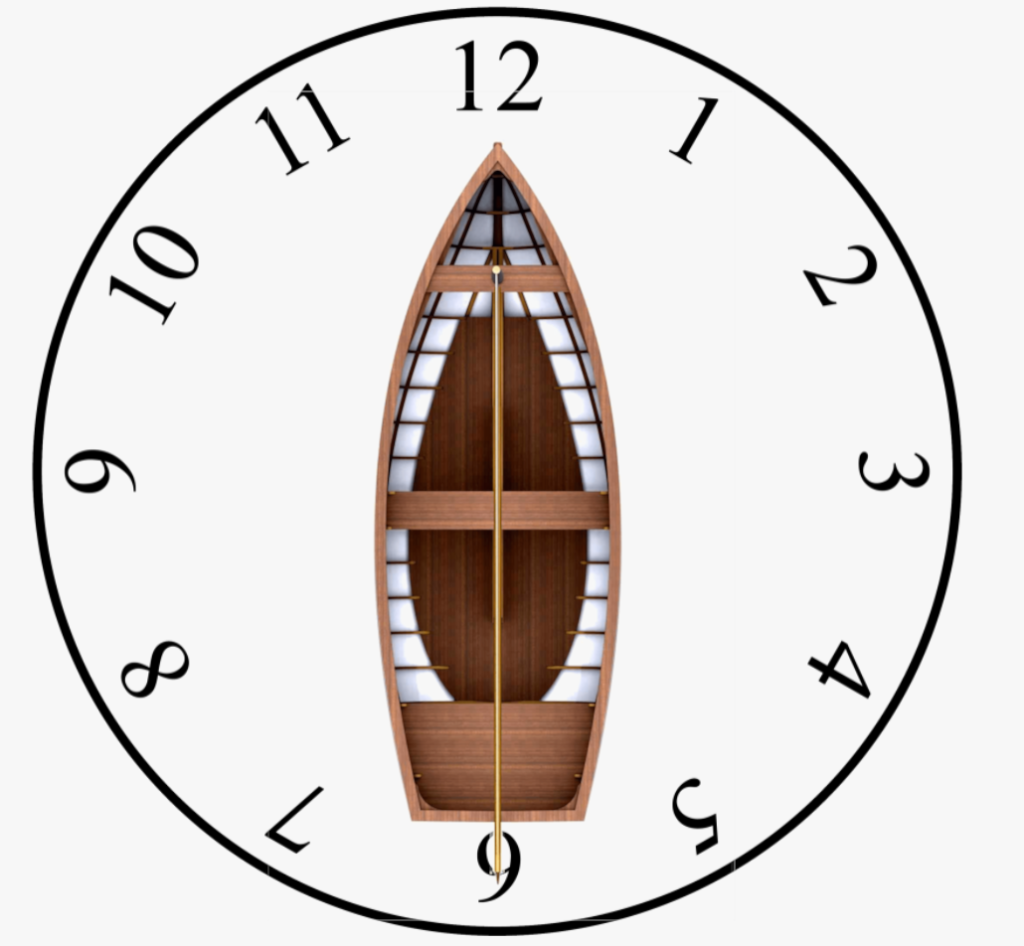A bearing is the direction to an object or location, expressed as degrees relative to a reference point or direction. In piloting, three “types” of bearings are used most often.
Related Pages
True Bearing

A bearing expressed in degrees true uses true north as the reference point. True north is found by drawing a line between the North Pole and the South Pole, known as a line of Longitude. The direction along this line to the North Pole is “True North” and is labeled as 000° (degrees).
The bearing to the object is determined by calculating the number of degrees clockwise from 000° to the object.
The graphic included above shows the compass rose included in the chart “Entrance to San Francisco Bay”, chart no. 18649. The star at the top indicates true north. Degrees relative to true north are provided along outer most circle of degrees. Inside the true north compass circle is a second circle which has been rotated from true north providing degrees magnetic.
Magnetic Bearing
A compass does not point in the direction of true north. Instead, it points towards the magnetic north pole. In marine navigation, the difference between true north and magnetic north is known as variation.
Note: You may also hear the term declination used to describe the same thing, however, in marine navigation the term declination is used only in celestial navigation.
Variation is not the same in different parts of the world. For example, in San Francisco Bay, variation is 13° 21′ E, meaning the compass points a bit over 13 degrees to the east of true north. In the waters near Martha’s Vineyard, variation is 14° 17′ W, and near Hawaii, it is 9° 30′ E.
To make things a bit more confusing, the magnetic north pole is constantly moving, resulting in magnetic north changing from year to year. For example, in San Francisco Bay, variation decreased from 14° 00′ E to 13° 21′ E between 2013 and 2020. In Martha’s Vineyard variations increases each year, and in Hawaii, it currently remains fairly constant.
The center of the compass rose includes a written description of variation, an “as of” date, and the annual increase or decrease rate [14° 00′ E (2013) Annual Decrease 7′]
Relative Bearing
As was indicated earlier, all bearings are relative to something, however, the term “relative bearing” is reserved for bearings that are relative to your vessel.
Probably the easiest way to visualize relative bearings is to start by using a clock face. Most of us have spotted another boat or a buoy and used the phrase “at 2 o’clock” to describe its location. What we have actually done is described the target’s bearing relative to the heading of our own vessel.

Unfortunately, the face of a clock is a bit too vague for use in navigation. All other bearings are expressed using the 360 degrees of a circle found on a compass. The relative bearing is no different. Simply substitute the number of degrees for the numbers on the clock face. 1 o’clock becomes 30°, 2 o’clock becomes 60°, 3 o’clock becomes 90°, and so forth around the face of the “compass/clock”.
Now, a target at 2 o’clock becomes 60° relative to our own vessel’s heading and a target at 10 o’clock is 300° relative.
In some usages, it may be more convenient to refer to bearings to the left of your vessel heading as degrees relative to port. In other words, a relative bearing of 300° might also be expressed as 60° to port. This is acceptable, as long as it is clearly labeled as such.
However, for now, I recommend all relative bearings be given to starboard relative to the heading of your vessel. Exceptions will become clear when you need them.
R + S = T
I hope you will always know the direction your ship is heading. If you do, and you know the relative bearing to a target you can always calculate its true bearing. Likewise, with your heading and the target’s true bearing, you can easily calculate its relative bearing.
R+S=T is easy to remember. It is in alphabetical order. It stands for:
Relative Bearing + Ship’s Heading = True Bearing.
If you have a relative bearing of 020° and a ship’s heading of 090° then the true bearing to the target is 110° (20 + 90 = 110).
If R+S=T is true, then simple math tells you that T-S=R must also be true. Therefore, a true bearing of 110° minus a ship’s heading of 090° yields a relative bearing of 020°. If you get confused about whether to add or subtract, if you are working the alphabet from A to Z, then add. If you are going backwards, from Z to A, then subtract.
